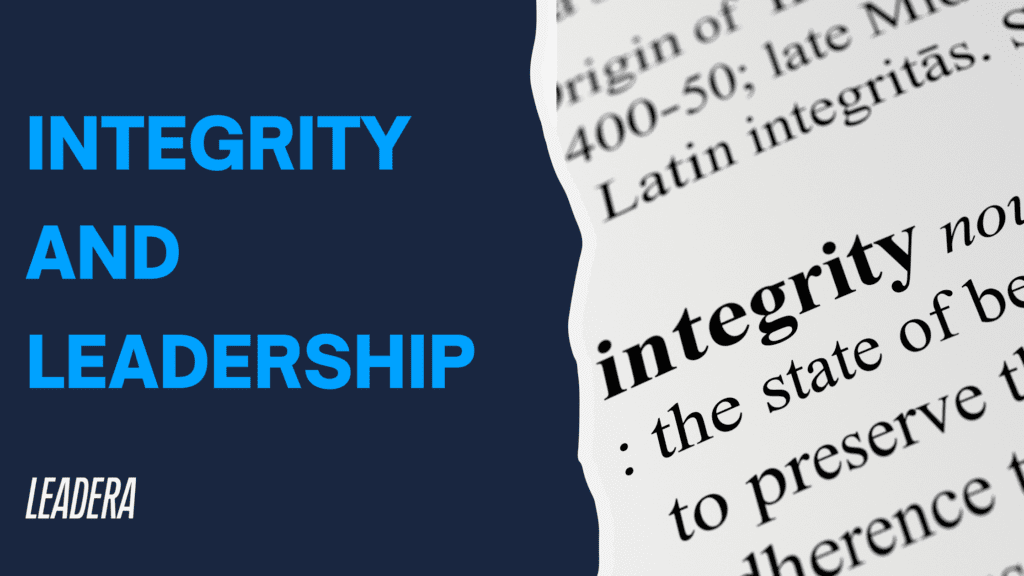
LEVERAGING YOUR ORGANIZATION’S MOST POWERFUL ASSET
If you ask senior leaders: “What is the most important resource in your company?” 99 times out of 100 you will hear them say “It’s our people”. After all, that IS the right answer. Not to mention the countless business books and articles that validate this as a fact, coupled with a corporate culture that reinforces it. You might say it is a truism. Yet if you take a close look into many companies, it is often difficult to tell that the leaders really know just how powerful engaging their employees can be. Perhaps even more ironic, it sometimes seems like the company’s plan is to keep their key people in the dark and try to “sneak” the strategy by without “disturbing the work” or getting employees involved in a meaningful way.
It seems that knowing the value of engaging employees as a concept and putting it into action are two very different things.
Much of the work of our firm is focused on strategic implementation in large organizations. We place a high premium on our clients leveraging their employees’ talents, skills and involvement to ensure successful implementation. Y et, when entering a new client system, it is rare to see leaders who instinctively or naturally engage the employees in the implementation of their strategy. It seems like gaining buy-in is the obvious thing to achieve, but instead we find that many leaders assume it, which can be a fatal error. On the other hand, when leaders are able to do this effectively — it results in inspired employees who have clarity and ownership for where the company is going. This usually leads to unprecedented business success, added value and employee satisfaction. BINGO!
We have found that some of the most important actions an executive can take in executing a strategy are to:

People have “too much to do.” Ask anybody, they will tell you. It can easily seem as if there is more to do than you could possibly ever get done.
However, consider this ~ you’re only going to do what you’re going to do today. That sounds obvious, right? But in reality, most people don’t relate to what they have to do as if that’s the case. For many, to-do lists have become lists of unrealistic expectations to accomplish in one day; they are full of things we feel we should do or have to do, which sets us up for failure by thinking that if it’s on the “list,” we’ll get to it.
The truth is, you’re not going to do all the things you have to do just because it’s on a list. You’re really only going to do what you actually do. Clear as mud? The key to what you’re going to do is knowing that actions take place in time. Anything you’re going to do takes a certain amount of time, therefore if it’s not on your calendar, it’s not going to get done and it won’t happen.
Spoiler alert – here is the one simple trick to successfully tackling your to-do list:
Schedule real time on your calendar to do the task, including scheduling an appropriate amount of time to do it in. Make a habit out of doing this one simple trick and you get ahead of the game in actually crossing that item off your to-do list.
Everyone has a long list of things they want to do, should do, and ‘have’ to do. But when you get into that list, most of the items on it never get done, which causes many of us a lot of stress. Giving up the myth of the unending list of things to do, which occurs as a burden, is a powerful step forward in productivity.
Being selective and rigorous about what goes into our calendars is the key. Plan and schedule the things you’re committed to doing ~ distinct from the things you want to do, should do, or ‘have’ to do. When you schedule items, be honest with yourself by allocating the proper amount of time for every aspect of the task. Otherwise it won’t get done. And while adding it to your calendar doesn’t guarantee the item will get done, it will significantly raise the likelihood if it’s “in existence.” Simply put – what is on the calendar has the highest likelihood of getting done.
I am impeccable about my calendar. Given what’s on my plate, I have to be. Here is an example on my calendar of this practice I’ve put in place where I schedule what I’m going to do and give myself enough time to get it done; say I have a meeting at 10:00 am downtown. On my calendar is:
- “9:15 – 9:30 pre-meeting briefing”
- “9:30 – 10:00 drive time to meeting” (it only takes 15 minutes to get there)
- “10:00 -11:00 attend and participate in meeting”
- “11:00 – 11:30 drive back to office”
- “11:30 – 11:45 debrief meeting”
That gives me the time to 1) brief, 2) travel, 3) sit down (as opposed to rushing in at the last moment), 4) participate fully in the meeting, 5) return to the office and debrief my notes from the meeting, and 6) send a follow-up to the client. So, while I am only going to a one-hour meeting, in reality ~ in real time ~ it takes two and a half hours to complete everything about that meeting.
We are paid to produce results with our time. Therefore, relating to and managing our time is a valuable asset that will make us more effective and more productive. Use your calendar as your best tool for effectiveness and productivity. I believe it is an essential skill for anyone in today’s workforce or otherwise, and a strong habit of successful leadership.
The bottom line is, you’re only going to do what you do. And if it’s on your calendar, there’s a much higher likelihood you’ll get it done.
——————————————
Kevin Cullen is President of Leadera Consulting Group, specializing in producing breakthrough business results. For more information on this topic or other business challenges we can help you solve, contact us at Leadera Consulting Group.
Kevin Cullen: kcullen@leaderacg.com
Read More
Did you know that seventy percent of all strategic program initiatives fail? While there is nothing like watching a team that is operating at full capacity and succeeding despite the high odds against them, a high-performance team doesn’t occur by accident. To prepare for future success, organizations must build their teams intentionally.
Having worked with hundreds of organizations, Leadera has discovered that much of the breakdown in teams and initiatives occurs in the way people work together ~ the way they communicate to and from each other; the way they support one another. The level of integrity that’s present amongst the team and in the project, as well as the way in which they each regard one another, are all elements on which the success of an initiative depends.
Leadera has identified and built its 2-day course ‘Building A High-Performance Team’ specifically to address the five essential practices for building high-performance teams, including:
1. Authentic Listening
This is much easier said than done, as most people think they are good listeners ~ not true. Authentic listening requires the ability to get in another’s world; not just their words, but the place from which they are speaking and understanding what they intend to say. Two good habits to develop this skill are: 1) give the speaker your undivided attention and 2) repeat back to the person what you heard and what you think their intention is in what they said. This gives the speaker an opportunity to confirm or correct your feedback.
2. Talking Straight
This means getting things up on the table that are difficult or uncomfortable to address ~ and to do it in such a way that people are left feeling respected, honored, and empowered. At the same time, it’s essential to get the issue (the “elephant in the room”) dealt with head on. It’s a fine line between confronting something that is difficult to talk about and doing so with the sensitivity it requires. This takes courage and grace at the same time.
3. Working as a Team
Watch any professional sports team that is working successfully and this becomes apparent. It requires a “pit crew” mentality. Each person on the team backs up, supports, and empowers the others. Their win belongs to each of them. “Your win is my win. Your loss is my loss.” They work together in such a way that extraordinary results take place. They back each other up and they support one another in difficult situations and circumstances. No one gets toppled by little things. Nothing gets in the way.
4. Honoring Your Word
If this practice doesn’t happen, you can forget the rest. This is simply working towards doing what you say you will do. It’s doing what you know to do, what’s expected, and what you know is right. Everybody knows how to do this ~ the question is, do they do it? Fundamental to this is cleaning it up when you don’t do what you said you would do. Clean it up immediately and move on.
5. Being Complete
The practice of being complete means that you don’t step over the trash. If something needs to be said, dealt with, or cleared up, it gets dealt with right away. The team understands that when you operate on top of issues, resentments, and things unsaid, everything comes to a grinding halt. This one is about getting things complete so they get clear, and there is a level of appreciation maintained by developing the practices of doing so. In sports, you see the guys in the dugout or on the court “high-fiving” each other with each little win throughout the game. This is no different than the importance of validating success and each win in the office.
Summary
Having these five practices in place provides you with the fundamental skills to build a high-performance team. We’ve seen that when teams have these five components working actively, the likelihood of success turns around dramatically from 70% likely to fail to 85% likely to succeed.
Leadera has a proven track record for successful project implementation when these five principles are utilized and present. We welcome the opportunity to bring the ‘Building a High-Performance Team’ course to your team and align it with the vision and values of your organization. For more information, reach out to us at the emails below.
——————————————
Kevin Cullen is President of Leadera Consulting Group, specializing in producing breakthrough business results. For more information on this course or other business challenges we help you solve, contact us at Leadera Consulting Group.
Kevin Cullen: kcullen@leaderacg.com, cc: acook@leaderacg.com
Read More
Without authenticity you can forget being an effective leader. Sound extreme? Over the last decade authenticity has emerged as one of the most critical aspects of leadership. In an article, Authenticity Paradox by Herminia Ibarra (Jan-Feb 2005 Harvard Business Review), the author says, “Authenticity has become the gold standard for leadership.” However, she adds, “a simplistic understanding of what it means can hinder your growth and limit your impact.”
Why? Because authenticity is not as simple as most people would like to think it is or assume that it is. Many people see authenticity as being “transparent” and therefore one must air ones every emotion and thought publicly. That kind of see-through self is not authenticity at all, in fact if you go about broadcasting your constant internal state it will end up undermining you for a couple of reasons. First, nobody wants to hear all that stuff. For goodness sake they can hardly stand the noise generated by their own internal state. And second, what’s going on with you internally is not who you are; nor is it what you stand for and therefore it is not your authentic self. On one hand authenticity is certainly not broadcasting any and all utterances from one’s internal state on loudspeaker, and on the other hand it is being honest and straight on where you stand in any given matter. Perhaps more importantly, authenticity requires being aware of and owning one’s weaknesses.
Adding more specificity to authentic leadership, Kevin Kruse (Forbes, May 2013) outlines four factors that are necessary for real and authentic leadership.
- Authentic leaders are self-aware and genuine. Authentic leaders are self-actualized individuals who are aware of their strengths, their limitations, and their emotions. They also show their real selves to their followers. They do not act one way in private and another in public; they don’t hide their mistakes or weaknesses out of fear of looking weak. They also realize that being self-actualized is an endless journey, never complete.
- Authentic leaders are mission driven and focused on results. They are able to put the mission and the goals of the organization ahead of their own self-interest. They do the job in pursuit of results, not for their own power, money or ego.
- Authentic leaders lead with their heart, not just their minds. They are not afraid to show their emotions, their vulnerability and to connect with their employees. This does not mean authentic leaders are “soft.” In fact, communicating in a direct manner is critical to successful outcomes, but it’s done with empathy; directness without empathy is cruel.
- Authentic leaders focus on the long-term.A key tenet in Bill George’s model (former CEO of Medtronic) is the company leaders are focused on long-term shareholder value, not in just beating quarterly estimates. Just as George did and as Bezos has done for years at Amazon, leaders realize that to nurture individuals and to nurture a company requires hard work and patience, but the approach pays large dividends over time.
Authenticity requires extraordinary courage ~ what Brené Brown calls ‘standing your sacred ground.’ For most it is not an attractive challenge and seen as something to dodge or avoid. I recently introduced the notion of authenticity to a newly advanced group of high-potential, up and coming managers in a Fortune 100 company. Not only did they not like the whole idea of authenticity, they began making a case for why being inauthentic was a better way to go.
They cited examples of how they couldn’t say certain things to their immediate supervisor and certainly couldn’t ever say ‘no.’ They were sure they had to act as if they were on board for something they clearly were not. They had to say ‘yes’ to things they knew they weren’t going to do. And they justified this by saying ‘everyone else does it, why shouldn’t I?’ That’s all under the guise of ‘you have to play politics in organizations.’
While I could appreciate that they had developed a style for not rocking the boat by acquiescing, I asked them to consider that when they’re doing that it is fairly obvious to the others in the room that that is what’s going on, and that at some level they had entered into a truce to conduct and be part of a charade of looking good as opposed to being authentic. Instead I asked them to consider what it might be like to actually be authentic ~ to deal with the issue at hand, instead of just ‘going along.’ Because there’s a good chance that if something doesn’t land right for them it’s not landing right for someone else as well.
Furthermore, they’re skillful in bringing issues to the forefront which might allow for the real issues to get resolved, as opposed to what usually happens which is everyone walks out of the meeting having heard what they wanted to hear and at some level knowing that isn’t what’s going to happen ~ destined for failure.
This is what separates authentic leaders ~ authentic leaders stand in the future. They can see the consequences down the road of being inauthentic. And they address anything in the present that is likely to thwart or block the future. If they don’t believe something is possible or doesn’t make sense they are compelled to say so. It does not give them license to be disagreeable, but it does require them to say where they stand in the matter.
Again quoting from Authenticity Paradox, “being authentic doesn’t mean you can be held up to the light and people can see right through you.” It’s a double-edged sword. On one hand you make your true position and feelings in the matter known, and on the other hand you stay above the fray of sharing your every thought, consideration and concern. Another way to think of this is to be able to present a mature and realistic version of your position on something without necessarily having to expose each and every flaw, and at the same time being aware of one’s weaknesses and flaws is critical to being authentic and therefore being an authentic leader.
Read More
Have you considered the impact of integrity as a driver of successful leadership? Integrity determines the opportunity set for performance, and therefore without it, you can forget about being a leader. With it you can see things clearly and lead people towards a future.
Below, we are sharing a pre-course reading on integrity that every Being an Exceptional Leader participant reads prior to starting the course. Participants report that their discoveries around integrity are life altering for them both personally and professionally.
Read more on integrity and leadership here.
Interested in our public or private Being an Exceptional Leader courses? Email Kevin Cullen to learn more.
Read More